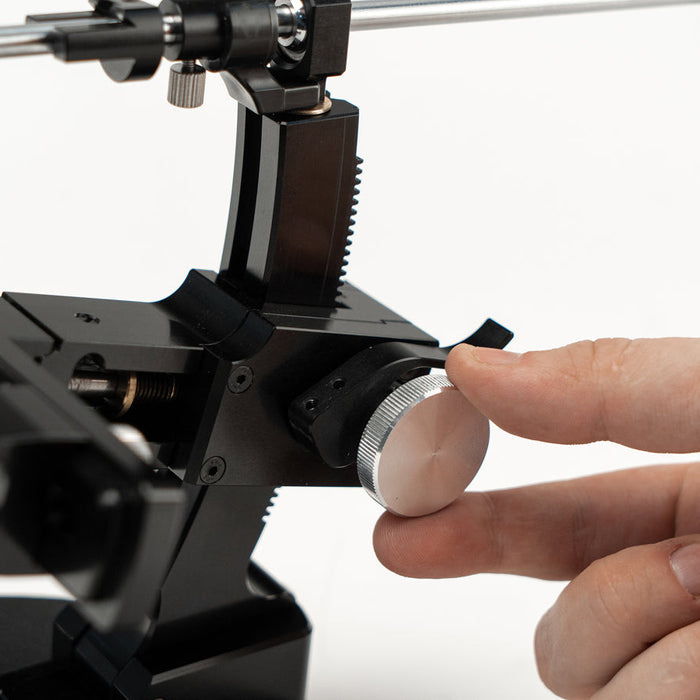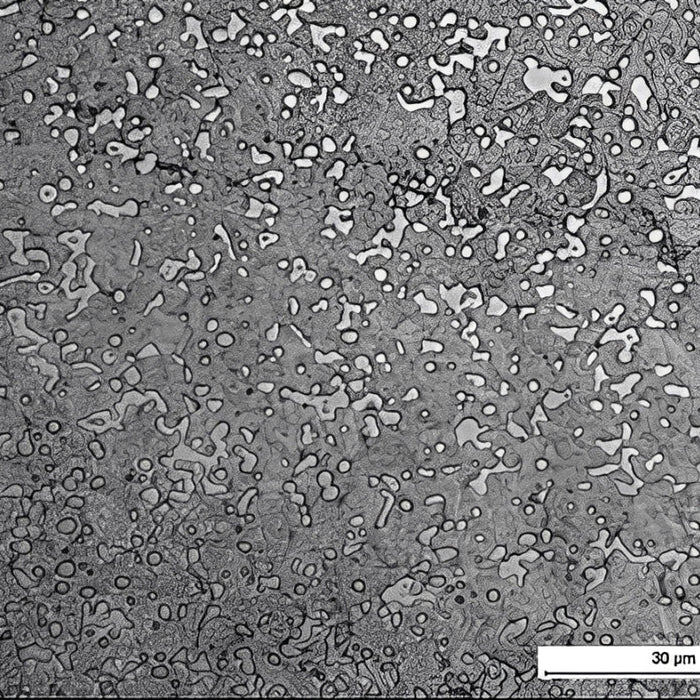Even the best quality and most expensive knives will gradually lose sharpness and will need a proper sharpening. It seems to be quite straightforward at the first glance. Anyone can properly sharpen knives, but before trying you need to study some sharpening instructions and make a lot of effort to acquire the necessary skills.
For starters, let us focus on the safety rules designed to prevent injuries when sharpening knives on your own. Following them will help you make your pocket or chef's knife sharp without risking your health.
1. Checking knife sharpness
Some people believe that sharpened blades are more dangerous than blunt blades. However, this is not true. When using sharp kitchen knives, you have to use less effort to cut something. With a blunt blade you will have to use more effort, which increases the risk of the blade travelling off the object you are cutting and wounding you.
The troubles start already when checking the blade before sharpening. Some people start checking the sharpness on their skin, trying to shave the hair, which can cause a cut.
There are easier ways to check the sharpness.
1.1. With a paper sheet
This is the simplest and most accurate method. You need to take a shop receipt, spice packaging, notebook or other paper and try to cut a strip from it. If a knife cuts the paper easily, it was properly sharpened.
The second variant of the paper test - is to roll up a thick magazine or newspaper and try to slice it. If the blade is sharp, the knife will easily do the job. The strips will have the same thickness and an even edge.

1.2. With bread
A safe way to check the knife sharpness is to try to slice a soft bread. A blunt pocket or kitchen knife will cope with this task. It will break the crust and tear the crumb. You do not need to sharpen a knife, if it does not crumble the crust and cuts the loaf into thin and even slices.
Note that this test is no good for a serrated bread knife. Thanks to the serrations, it cuts any type of bread perfectly regardless of how sharp it is.
1.3. With tomatoes
One of the most popular tests is cutting tomatoes. This vegetable has a tough peel and soft insides. A dull knife will not cut the fruit neatly into slices. Whereas a sharp one will make thin slices, even if you do not hold the tomato with your hand.

2. Choosing the right tools for sharpening
The next stage to a safe work with knives is to choose a sharpening tool. There are different models in shops, ranging from simple mechanical to electric ones. Let us consider the most common options.
2.1. Musat (sharpening rod)
This tool is a rod with a rough surface, mounted on a convenient handle. In terms of design, a mousat is similar to a file with a round or oval working element.
Mousats are made of different materials:
- metal;
- ceramics;
- diamond coated steels.
If you master the minimum necessary skills to handle this tool, you will find it completely safe to use for sharpening. However, it is more suitable for bringing the edge back in alignment and restoring some sharpness than making a knife sharp. A musat is used to keep the blade in good condition until the point when it requires a proper sharpening.

2.2. Water whetstones
There are hundreds of abrasive stones available on the market, which are often used to sharpen cheap stainless steel or low-carbon alloy knives. But they are not suitable for professional chef's tools. Hard materials, including Damascus steel, are sharpened with special water stones with the right grit.
These tools allow you to restore the sharpness of any knife. But working with them can be very dangerous. Careless movements can lead to cuts or more serious injuries. It is recommended to thoroughly study the work procedure and watch video instructions before trying manual sharpening on your own.

2.3. Sharpeners
The most user-friendly and safe option is to use a sharpener. The main working element of this tool are the abrasive inserts placed in a plastic case. To sharpen a knife you need to run the blade through the slot until you get the desired sharpness level.
The downside of such a tool is the fixed angle and the danger of damaging the blade of expensive knvies. On top of that, they are not always able to cope with sharpening hard steels.
You can use a TSPROF sharpening system to make the process user friendly and increase safety. These sharpeners allow you to set the angle with an accuracy of 0.1 degree with one hand and sharpen the blade at exactly the same angle on both sides. TSPROF sharpeners allow you to use any abrasives of an Edge Pro type with a backing plate or any flat end abrasives and securely fix a knife in the clamps, ensuring that you will not cut yourself in the process.
Some manufacturers also offer electric sharpeners, which have an abrasive belt or wheel driven by an electric motor. This is one of the most effective tools used by professional sharpeners. But it is dangerous to use it without the appropriate skills.

3. Knife sharpening safety instructions
To prevent injuries when working with sharpening tools, you must follow a few simple rules.
- When sharpening, move the knife away from you, although this is not always possible. You should also avoid sharpening a knife in mid air, especially when holding the bar in your hand and pointing the blade edge at yourself. You should find a secure and steady work surface and place everything you need on it.
- You should only sharpen and hone clean knives, in order to avoid damage to the blade and the sharpening tool. Be sure to clean the blade after sharpening to get rid of metal burrs.
- Choose the right sharpening tools and follow the user instructions. Musats are best for honing the blade, while for a complete sharpening you need a stone of the right grit. An electric sharpener requires a thorough study of the multi-page instruction manual. It is equally important to bear in mind the characteristics of the blade. For example, you should not sharpen a multi-layered knife with a ceramic sharpener.
- Store the knife in a dedicated place. Do not place the knife near any additional tools, containers, or foodstuffs. Otherwise, you may accidentally try to pick up an object during work and cut yourself. Also, do not leave it on the edge of the table, from where it can fall and cause injury.
- Move the knife or tool smoothly. Do not swing, juggle or toss the blade or a musat. If the knife falls, let it fall and do not try to grab it in mid air.
- Keep tools in their cases and pouches. Keep sharpening consumables and sharpened blades isolated from each other. This prevents the knives from coming into contact with hard objects and keeps them sharp longer.
These basic rules are relevant regardless of what and how you sharpen. There are also YouTube tutorials that describe the proper handling of sharpening tools.
4. Safe sharpening with a musat
There are two ways of honing the blade, but within this article we will describe the safest and easiest one. It is called Calmly and is suitable for beginners. This method involves resting the tip of the musat on a wooden board or a table top. It is a good idea to put a towel on the surface to avoid slipping of the musat.
The next steps would be as follows:
- Take the blade with your right hand and the musat with your left.
- Place the tool at an angle of approximately 20 degrees relative to the table.
- Place the knife parallel to the table so that the sharp part of the knife is pointing downwards. This reduces the risk of injury.
- Move the blade from the handle of the musat downwards, while holding the desired angle. The blade should be moved from the heel to the tip.
- Sharpen the second side in the same way, but place the musat at an angle in the opposite direction.
This method of honing makes it extremely difficult to cut yourself. But it will not work if the cutting edge is too dull or has serious defects. You will have to use another knife sharpening method.

5. Safe sharpening with a whetstone
A water stone will help to restore sharpness of a very blunt cutting tool. You have to use two or three bars of different grit. It depends on the type of blade, purpose of the blade and some other parameters.
The next steps would be as follows:
- Soak the bar in a water container until it no longer has air bubbles coming out of it. The stones should be placed in separate trays so that the different grit abrasives do not clog each other.
- Secure the stone to the table so that you do not need to hold it. This reduces the risk of injury and allows you to use both hands for blade edge sharpening.
- Sharpen the knife starting with the coarsest grit stone. The process may involve 2 or 3 stages depending on the type and quality of the blade. You can start with a 700 grit stone, then move to a 1000 grit and then to a 2000 grit.
To avoid troubles and to improve the quality of sharpening, you should follow these safety rules:
- Do not apply too much pressure to the stone. This leads to faster wear and increases the risk of cutting yourself, if your hand slips while the blade is moving.
- To control the sharpening angle, you would need to press down the blade with your fingers, which can be dangerous. Special holders can be used to avoid change in the angle and to increase safety.
- When sharpening, you should move the blade with the spine away from you and apply more force when pushing the blade forward.
You should start very slowly and carefully, speeding up only after you have acquired the necessary skills and experience.
Conclusion
Following safety rules for working with knives and sharpening knives make it possible to avoid injuries. For this purpose, you should not only study them, but also follow them during work. If you are not confident in your skills, you can contact a master who will make your knives sharp and will remove any defects of the cutting edge.











